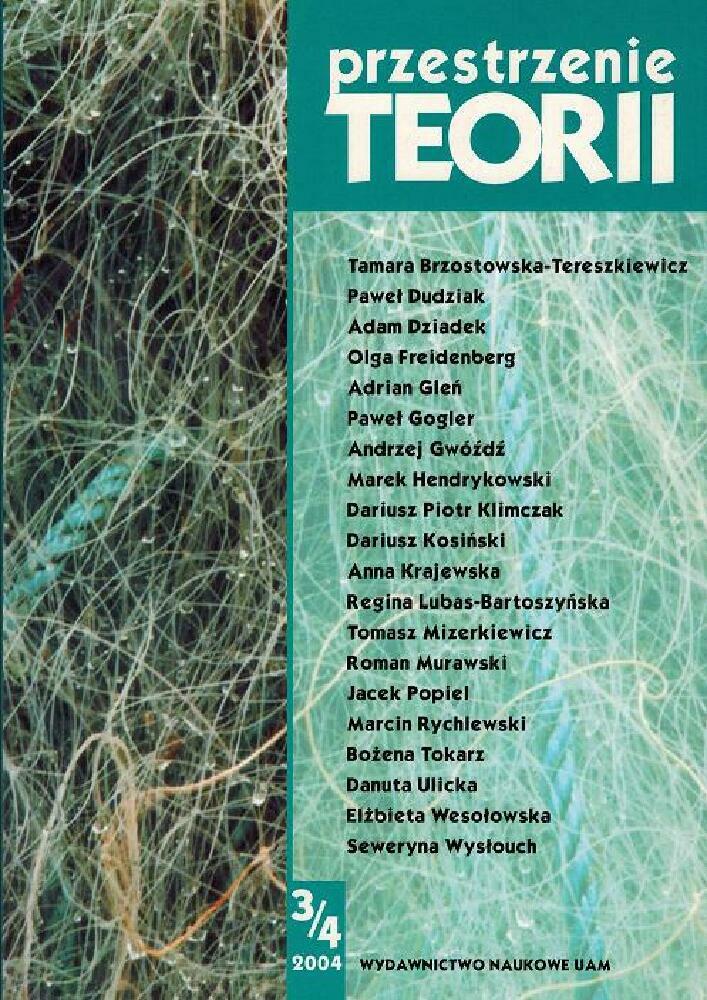Abstrakt
The article addresses questions of the relation between literary and literary science discourse which have been intensively discussed in poststructuralist reflection. As the author argues, their separation, accepted until the half of the century, in fact took place on the basis of pragmatic criteria (strongly connected with institutional division of work in the field of literary sciences), and not of a statement's formal characteristics or reference. What created the effect of stylistic, generic and compositional distinctness of speech genres inherent to literary science was only the prototype of literary science discourse shaped in result of their application and frequently confirmed in normative approaches, where it was formulated in terms of the categories of "truth" obliging science, as opposed to "fiction" distinguishing literature. Yet ineffaceable differences between literature and literary science are related to non-fictional and principally monosubjective characteristics of the discourse of the latter. Hence, in opposition to currently dominating narrativist interpretations, they can be by no means identified with respect to the "narrativeness" recognizable in both cases. While discussing these approaches on the basis of three chosen Polish works belonging to historioliterary prose, the author proposes to treat literary science discourse in categories applied to the description of a dramatic statement. For, what seems to be of paramount importance both in modernist and postmodernist phase, is the question of the author's subject's position and attitude towards the object of the statement and the relevant modalization of speech. A detailed analysis of their historical changeability remains, however, beyond the scope of the presented considerations.Licencja
Autorzy
Autorzy tekstów przyjętych do publikacji w czasopiśmie „Przestrzeniach Teorii” są zobowiązani do wypełnienia, podpisania i odesłania na adres redakcji umowy o udzielenie nieodpłatnej licencji do utworów, z zobowiązaniem do udzielania sublicencji CC.
Zgodnie z umową, autorzy tekstów opublikowanych w czasopiśmie „Przestrzeniach Teorii” udzielają Uniwersytetowi im. Adama Mickiewicza w Poznaniu niewyłącznej i nieodpłatnej licencji oraz zezwalą na użycie sublicencji Creative Commons Attribution-NonCommercial-NoDerivatives 4.0 International (CC BY-NC-ND 4.0).
Autorzy zachowują prawa do dalszego, swobodnego rozporządzania utworem.
Autorzy, którzy wykorzystują w swoim tekście cudze utwory (np. ilustracje, fotografie) proszeni są o dostarczenie do redakcji czasopisma zgodę na publikację od uprawnionych podmiotów.
Użytkownicy
Zainteresowani użytkownicy internetu uprawnieni są do korzystania z utworów opublikowanych po 2015 roku „Przestrzeniach Teorii” tylko w calach niekomercyjnych, pod następującymi warunkami:
- uznanie autorstwa - obowiązek podania wraz z rozpowszechnionym utworem, informacji, o autorstwie, tytule, źródle (odnośniki do oryginalnego utworu, DOI) oraz samej licencji;
- bez tworzenia utworów zależnych - utwór musi być zachowany w oryginalnej postaci, nie można bez zgody twórcy rozpowszechniać np. tłumaczeń, opracowań.
Do wszystkich tekstów opublikowanych przed 2015 r. prawa autorskie są zastrzeżone.
Inne
Uniwersytet im. Adama Mickiewicza w Poznaniu zachowuje prawo do czasopisma jako całości (układ, forma graficzna, tytuł, projekt okładki, logo itp.).
